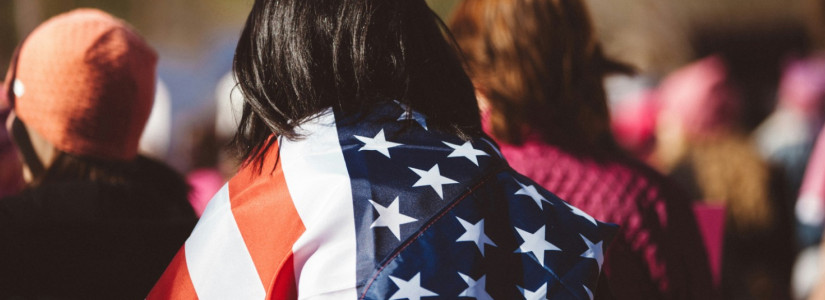LIHEAP: A Valuable Lifeline for Those Needing Help With Utility Expenses
LIHEAP, formally known as the Low-Income Home Energy Assistance Program, was established by Congress more than 30 years ago. Overseen by the Department of Health and Human Services and operated by state agencies, LIHEAP uses federal grants supplemented by private dollars to help low-income individuals with their utility bills. The program was originally meant to address high heating costs in the Northeast but soon spread throughout the country.
Click Here For Additional Benefits
Originally, LIHEAP only provided assistance with electricity or fuel costs. Today, the program has expanded to include a variety of services to ensure that low-income Americans have safe living conditions all year long. The program has helped nearly 7 million households since its inception with many of those being the elderly, disabled, or families with young children.
How Does the LIHEAP Program Operate?
Individuals who qualify for the program can receive government assistance to offset a portion of their heating and cooling costs. Extra assistance is also available during energy emergencies, such as extreme heat or cold and natural disasters. The program provides a valuable lifeline to the working poor and other at-risk individuals who would otherwise be forced to sacrifice necessities, such as food and medicine, in order to pay for heat and air conditioning.
LIHEAP grants also help low-income individuals reduce their utility bills through residential weatherization projects and energy-related education programs. Other goals of the program include improving heating and cooling safety and preventing medical issues caused by unsuitable indoor temperatures.
What Are the LIHEAP Qualification Guidelines?
The rules for each state can vary, but LIHEAP benefits are typically available for low-income individuals and families in a wide range of situations. For example, renters can qualify regardless of whether they live in subsidized or public housing. The government may provide the funds to the renter as a reimbursement for their utility bills or to the landlord so that he can lower the rent that he charges to the tenants.
In most cases, individuals are able to receive LIHEAP assistance while receiving benefits from other programs, such as Temporary Assistance for Needy Families or the Supplemental Nutrition Assistance Program. The same is also true for those receiving benefits from Social Security or the Veterans Administration.
A person can qualify for LIHEAP assistance even if they are employed if they earn less than the maximum income limit. The maximum income a person can earn to be eligible for the program varies from state to state.
What Is the Assistance Amount?
The amount of money that a person receives under the LIHEAP program can vary widely based on their circumstances and the state in which they live. As a general rule, the benefit amount is determined by the person's income, the number of people in the family, and how much the household pays for heating and cooling. In most cases, all individuals who use the home as a primary residence are counted as family members, and the income of all adult wage earners is taken into consideration.
LIHEAP Weatherization Services:
A portion of LIHEAP funds goes toward helping qualified individuals with home repairs and weatherization enhancements. These services are meant to help the homeowner reduce their utility bills by making the home more energy-efficient. This type of service is a natural extension of the LIHEAP program since it reduces overall energy consumption and the public's need for energy assistance. The majority of the weatherization funds go directly to homeowners. Landlords may qualify for weatherization assistance for rental properties; however, they are required to contribute a considerable portion of the funds needed for the project.
Additional Services Available Through LIHEAP:
Homeowners may be able to take advantage of other LIHEAP services based on their location. The state agency that administers the funds in your state is the best source of information about resources available in your area. In some instances, LIHEAP may be able to help with overdue bills to keep utilities from being turned off. Funds may also be available to replace old, inefficient heaters and air conditioners, which can reduce utility bills and ensure a safe and comfortable home. The program may also provide help during emergencies to reduce the risk of utility-related injuries or property damage, such as turning off utilities after a hurricane, flood, or tornado.
Applications are handled by your individual state. Follow this link to apply.
Click Here For Additional Benefits
Originally, LIHEAP only provided assistance with electricity or fuel costs. Today, the program has expanded to include a variety of services to ensure that low-income Americans have safe living conditions all year long. The program has helped nearly 7 million households since its inception with many of those being the elderly, disabled, or families with young children.
How Does the LIHEAP Program Operate?
Individuals who qualify for the program can receive government assistance to offset a portion of their heating and cooling costs. Extra assistance is also available during energy emergencies, such as extreme heat or cold and natural disasters. The program provides a valuable lifeline to the working poor and other at-risk individuals who would otherwise be forced to sacrifice necessities, such as food and medicine, in order to pay for heat and air conditioning.
LIHEAP grants also help low-income individuals reduce their utility bills through residential weatherization projects and energy-related education programs. Other goals of the program include improving heating and cooling safety and preventing medical issues caused by unsuitable indoor temperatures.
What Are the LIHEAP Qualification Guidelines?
The rules for each state can vary, but LIHEAP benefits are typically available for low-income individuals and families in a wide range of situations. For example, renters can qualify regardless of whether they live in subsidized or public housing. The government may provide the funds to the renter as a reimbursement for their utility bills or to the landlord so that he can lower the rent that he charges to the tenants.
In most cases, individuals are able to receive LIHEAP assistance while receiving benefits from other programs, such as Temporary Assistance for Needy Families or the Supplemental Nutrition Assistance Program. The same is also true for those receiving benefits from Social Security or the Veterans Administration.
A person can qualify for LIHEAP assistance even if they are employed if they earn less than the maximum income limit. The maximum income a person can earn to be eligible for the program varies from state to state.
What Is the Assistance Amount?
The amount of money that a person receives under the LIHEAP program can vary widely based on their circumstances and the state in which they live. As a general rule, the benefit amount is determined by the person's income, the number of people in the family, and how much the household pays for heating and cooling. In most cases, all individuals who use the home as a primary residence are counted as family members, and the income of all adult wage earners is taken into consideration.
LIHEAP Weatherization Services:
A portion of LIHEAP funds goes toward helping qualified individuals with home repairs and weatherization enhancements. These services are meant to help the homeowner reduce their utility bills by making the home more energy-efficient. This type of service is a natural extension of the LIHEAP program since it reduces overall energy consumption and the public's need for energy assistance. The majority of the weatherization funds go directly to homeowners. Landlords may qualify for weatherization assistance for rental properties; however, they are required to contribute a considerable portion of the funds needed for the project.
Additional Services Available Through LIHEAP:
Homeowners may be able to take advantage of other LIHEAP services based on their location. The state agency that administers the funds in your state is the best source of information about resources available in your area. In some instances, LIHEAP may be able to help with overdue bills to keep utilities from being turned off. Funds may also be available to replace old, inefficient heaters and air conditioners, which can reduce utility bills and ensure a safe and comfortable home. The program may also provide help during emergencies to reduce the risk of utility-related injuries or property damage, such as turning off utilities after a hurricane, flood, or tornado.
Applications are handled by your individual state. Follow this link to apply.






